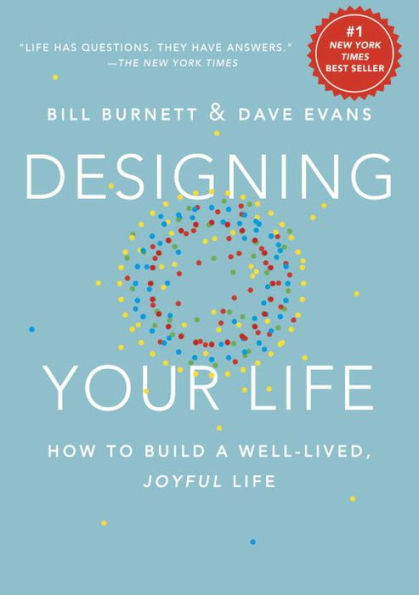Reading Group Guide
The questions and discussion topics that follow are intended to enhance your reading group’s discussion of Designing Your Life: How to Build a Well-Lived, Joyful Life by Stanford University professors Bill Burnett and Dave Evans.
1. In the introduction, the authors point out that only 27 percent of college graduates have a career related to their majors. What did you think when you read that statistic? Are you among the 27 percent?
2. The concept of “reframing”—pivoting your perspective to address a perceived problem—plays an important role in this book. What experiences have you had with reframing, either in your career or in your personal life?
3. When discussing the role of a designer, the authors say, “Designers don’t think their way forward. Designers build their way forward” (page xxv). Until you read this book, had you been mostly thinking or mostly building?
4. Did you perform all the exercises in the book? Which ones did you find most thought provoking?
5. On page 26, the authors write, “Designing something changes the future that is possible.” What does this mean to you?
6. Which was a greater challenge while building your compass: describing your Workview or describing your Lifeview?
7. The authors say that the process of reconciling Workview and Lifeview often leads to the biggest “aha” moments (page 37). What became clear to you?
8. Have you ever experienced “flow,” the feeling of complete engagement? If so, when?
9. On page 67, the authors write, “There is no one idea for your life. There are many lives you could live happily and productively.” Have you ever thought this way before? How many lives did you imagine for yourself while reading this book?
What was the most surprising connection you made in your mind map?
10. When you created your Odyssey Plans, which one set your heart to racing? Was it a new discovery for you?
11. What was the most surprising connection you made in your mind map?
12. Are you discussing this book with your Life Design Team? If you haven’t assembled one yet, what’s stopping you?
13. Chapter 6 is devoted to prototyping: asking questions, uncovering hidden biases, iterating rapidly, and creating momentum. Were you familiar with this concept before reading the book? What aspects of your life have you prototyped?
14. Did you hold a brainstorming session? What was your most successful question? How many ideas did you generate?
15. What is the difference between pursuing a job and pursuing an offer? In your own life, which do you generally do?
16. On page 155, the authors talk about “pursuing latent wonderfulness.” How would you define that concept?
17. What did you learn from the jam study described on pages 161 and 162?
18. The notion of failure as a useful thing comes up frequently in the book, and particular in chapter 10. In your own life, how have you “failed forward”?
19. Until now, have you received more advice (when someone is telling you what they think) when making a decision, or more counsel (when someone is trying to help you figure out what you think)? Which has proved more helpful?
20. What was your biggest revelation from this book?
21. If the authors were in this room right now and asked you, “How’s it going?” how would you respond?


